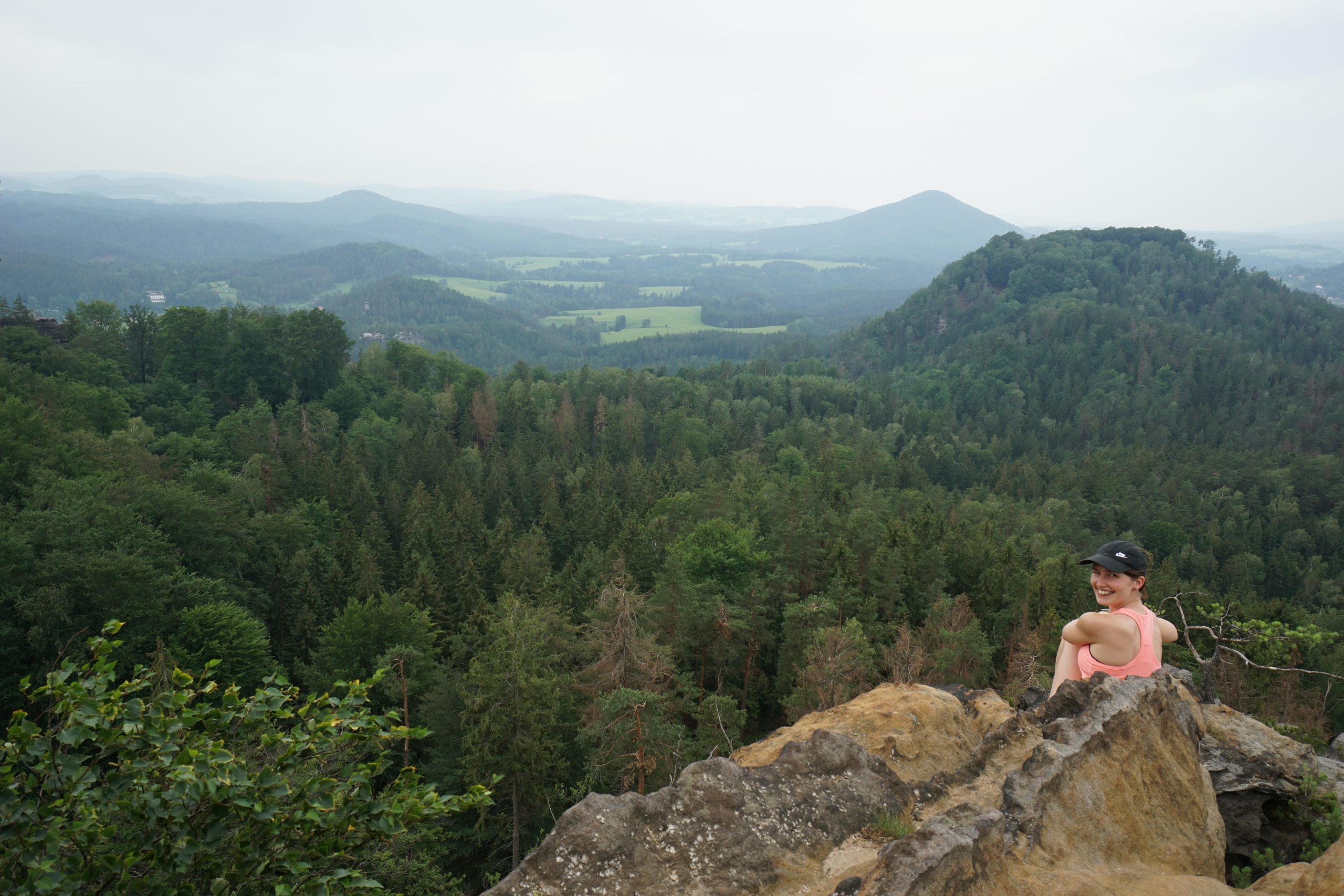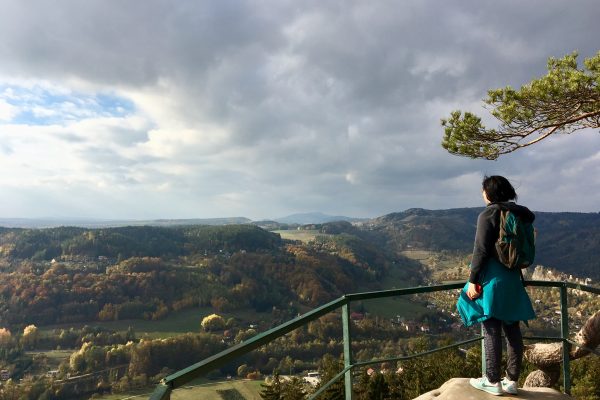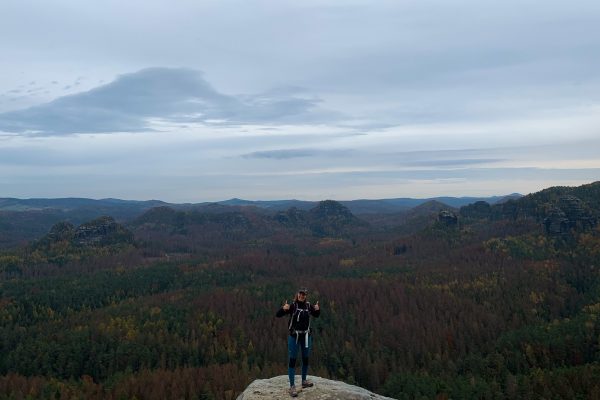While I love to hike for at least a few days in a row, day hikes are by far the most common hikes I’ve done. They are also easier to plan and so I go on a day hike almost every week. Plenty of apps (e.g. AllTrails or Komoot) can inspire you and even suggest a precise trail to follow for a day in an area you chose. But what if you want something in-between? How to create a custom route for a day walk?
When making my own day routes, I follow a 3-step process. Scroll down for further explanations per step. Let’s go!
Step #1: Pick an area to hike in
Step #2: Check for existing paths and viewpoints
Step #3: Pick your challenge
Step #1: Pick an area to hike in
When picking the area, there are two things I consider (aka sub-steps):
What is the terrain? Some days I don’t mind flat(-ish) walks, while on others I’m really craving for at least a 300m elevation difference. To manage my expectations in unknown areas, I check the terrain on Google maps by selecting the terrain map type and scouting for a promising area. Green patches are a great sign (nature, baby!) as well as bumps on a map. We’re looking for hills, right? 😉
How will I get there? If I have a car, this sub-step is not a concern. If I use public transport, that is what will constrain my choices. Back when I lived in Prague, I used to pick a hiking area based on the train network. A great train connection meant that I will have more time to hike and I won’t have to worry about how to get back home.
Step #2: Check for existing paths and viewpoints
You picked an area and you know how to get there, now let’s check if there are trails we can follow. Wait a minute, we’re looking for a custom route here! Why are we checking for existing trails? While you’ll be making your own route, (most of the time) you do want to walk on an established path. For that task I tend to check mapy.cz which shows marked trails and their names, reassuring me I won’t end up on a highway or in a bog.
What sometimes happens in this step is that I find a long-distance trail and decide to follow it for a section. That is actually how I found out about the GR5 trail when I decided to visit Vosges national park in France. While looking for a trail to follow, I saw that GR5 goes through the whole park and I was sold on it. You don’t have to pick a single route to follow, just make sure there are walking paths in the area you’re going to explore. This will just make your life easier (and safer).
While looking for an established path I also check for any scenic points. Scenic views often serve as a great reward for the effort and it’s a great goal to hike to. They are also a great spot for a break. That is why I try to find at least one scenic point in any hike I do. Many trail apps mark scenic viewpoints either as a red star or as a photo camera icon.
Step #3: Pick your challenge
In this step you’ll decide how long to walk. You might merge it with the previous step in case you find a trail that fits your daily goal precisely. Otherwise, once you have the viewpoints, you should check how long it takes to visit them (if multiple points). On your hiking app (AllTrails, maps.me, Komoot, mapy.cz, etc.) select your starting and endpoints, add any points in-between (e.g. viewpoints) and the app will show you the route with an approximation of the time it should take, elevation profile and distance.
This step is the hardest for me. I tend to be over-optimistic about how many km to do in a day. In the Czech Republic, I would often create this awesome route with 5 viewpoints and constant ups and downs. Then I’d check on mapy.cz how long will it take and I’d get an 8 or 9-hour estimate.
The most important question you need to ask yourself – is that doable? If you don’t hike often, maybe 3-4 hours is already a great challenge. If you’re hiking in autumn or winter, assess whether you will be back before the dark. Finally, take into consideration breaks as well. You should count extra time for lunch and rest breaks.
And that’s it! With a few iterations in each step, you should have an adventure planned all by yourself. Let me know where will your next custom-made trip be in the comments section below!



